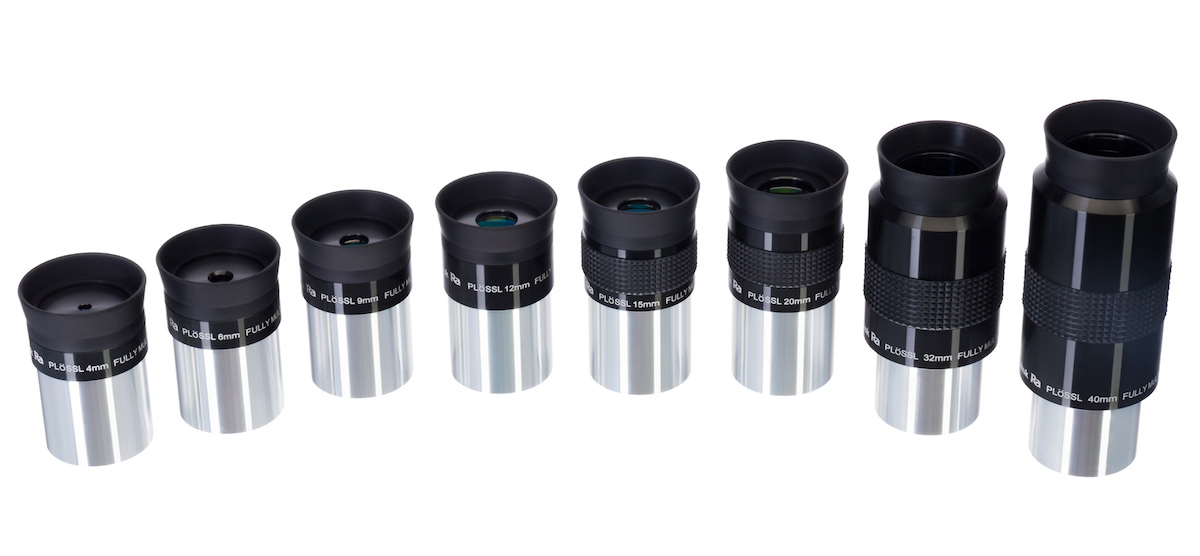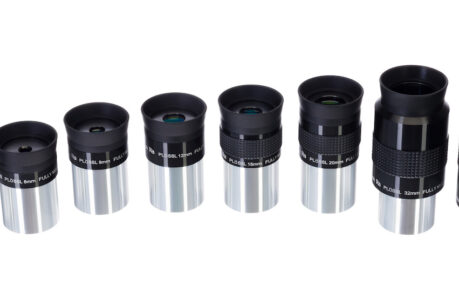Unlocking the Secrets of the Plossl Eyepiece and Exploring Alternatives
When gazing at the night sky, one’s sense of wonder and curiosity often knows no bounds. Astronomy enthusiasts, both novice and seasoned, indulge in this timeless pursuit of observing celestial objects, studying distant galaxies, and marveling at the beauty of our universe. One of the essential tools for this cosmic exploration is the eyepiece, and among the myriad options available, the Plossl eyepiece stands as a stalwart choice. In this comprehensive article, we’ll delve into what a Plossl eyepiece is, how to effectively use one, and explore alternative eyepiece options that can elevate your stargazing experience.
The Allure of the Plossl Eyepiece
What is a Plossl Eyepiece?
Named after its creator, Austrian optician Ernst Plossl, the Plossl eyepiece is a time-tested optical instrument revered for its remarkable design and performance. Since its inception in the 19th century, it has remained a go-to choice for amateur astronomers and astrophotographers alike.
The hallmark of a Plossl eyepiece is its optical composition, characterized by a four-element lens design. This configuration includes two doublet lenses, carefully crafted to minimize optical aberrations such as chromatic aberration and spherical aberration. Such precision in design ensures that the Plossl eyepiece delivers exceptional image clarity and sharpness.
Unpacking the Features
- Eye Relief: Plossl eyepieces are renowned for their generous eye relief, which is the distance between the eyepiece and your eye while still maintaining a full field of view. This feature is particularly appealing for eyeglass wearers, as it accommodates the use of eyeglasses without sacrificing the viewing experience.
- Wide Apparent Field of View: Plossl eyepieces typically offer a wide apparent field of view, often exceeding 50 degrees. This wide field of view allows for immersive stargazing experiences, making it easier to locate and track celestial objects across the night sky.
- Multi-Coated Optics: Many modern Plossl eyepieces are equipped with multi-coated optics. These coatings reduce reflections and enhance light transmission, resulting in brighter and more contrast-rich views of celestial objects.
- Versatility: Plossl eyepieces are versatile tools suitable for a wide range of telescopes, from refractors to reflectors. They come in various focal lengths, allowing astronomers to choose the eyepiece that best suits their observational needs.
Mastering the Art of Using a Plossl Eyepiece
Step 1: Telescope Setup
Before diving into the specifics of using a Plossl eyepiece, it’s essential to have your telescope properly set up. Ensure that your telescope is securely mounted, aligned, and properly collimated. Collimation is the process of aligning the optical components of your telescope to achieve optimal image quality.
Step 2: Choosing the Right Eyepiece
Selecting the appropriate Plossl eyepiece for your stargazing session is crucial. The choice depends on your telescope’s focal length and the specific object you intend to observe. To calculate the magnification provided by an eyepiece, you can use the following formula:
Magnification = Telescope Focal Length / Eyepiece Focal Length
For instance, if your telescope has a focal length of 1000mm and you opt for a Plossl eyepiece with a 10mm focal length, your magnification will be 100x.
Step 3: Observing Technique
Once you’ve chosen the appropriate Plossl eyepiece and inserted it into your telescope’s focuser, it’s time to embark on your celestial journey. Here are some tips to enhance your observing experience:
- Start with Low Magnification: Begin your observations with lower magnification to locate and center the celestial object you wish to observe. High magnifications are best suited for close-up views after initial alignment.
- Use Slow and Smooth Movements: Avoid abrupt and jerky motions when adjusting your telescope. Smooth, slow movements will help you keep the object in your field of view and prevent vibrations.
- Practice Patience: Achieving the best views through your Plossl eyepiece often requires patience and practice. Let your eyes adapt to the darkness, and take your time to appreciate the details of the celestial object.
- Keep Both Eyes Open: While it may sound counterintuitive, keeping both eyes open while observing can help reduce eye strain and improve your ability to center and track objects.
- Experiment with Filters: Depending on the object you’re observing and light pollution levels in your area, consider using filters to enhance contrast and visibility.
- Record Your Observations: Maintaining an observing log can be both rewarding and educational. Note the date, time, object observed, and your observations. Over time, this log can serve as a valuable record of your astronomical journey.
Step 4: Maintenance and Care
Proper maintenance of your Plossl eyepiece is essential to ensure its longevity and performance. Here are some maintenance tips:
- Clean Optics Carefully: If your eyepiece requires cleaning, use specialized optical cleaning solutions and lens tissue. Gently wipe the lens surfaces to avoid scratching.
- Store Properly: When not in use, store your eyepieces in a clean and dry environment. Many eyepieces come with protective caps to prevent dust and debris from accumulating on the lenses.
- Handle with Care: Always handle your eyepieces with clean hands and avoid touching the lens surfaces. Fingerprints and smudges can adversely affect image quality.
Exploring Alternatives to the Plossl Eyepiece
While the Plossl eyepiece offers impressive optical quality and versatility, the world of astronomy eyepieces is rich with alternatives, each catering to different preferences and observing goals. Let’s explore some of these alternatives:
1. Wide-Angle Eyepieces
Wide-angle eyepieces, as the name suggests, provide an even broader field of view compared to Plossl eyepieces. With apparent fields of view often exceeding 70 degrees, these eyepieces offer a breathtaking panoramic view of the night sky. They are particularly favored for deep-sky object hunting, providing immersive experiences when observing star clusters, nebulae, and galaxies.
2. Zoom Eyepieces
Zoom eyepieces offer variable focal lengths within a single unit, allowing astronomers to adjust magnification without changing eyepieces. These eyepieces are versatile, making them an excellent choice for observers who frequently switch between different celestial objects and magnification levels.
3. Barlow Lenses
A Barlow lens is an accessory that, when placed between the telescope and eyepiece, effectively doubles or triples the focal length of your telescope. This results in increased magnification without the need for additional eyepieces. Barlow lenses are cost-effective and provide flexibility in achieving various magnification levels.
4. Nagler Eyepieces
Nagler eyepieces are renowned for their exceptional optical quality and immersive viewing experiences. They offer ultra-wide apparent fields of view, often exceeding 80 degrees. These eyepieces are cherished by astronomers seeking unparalleled views of the cosmos, especially for observing expansive star fields and wide celestial vistas.
5. Ethos Eyepieces
Ethos eyepieces, produced by the same company as Nagler eyepieces, take wide-field viewing to the next level. With apparent fields of view reaching 100 degrees or more, Ethos eyepieces offer unmatched panoramic views, making them ideal for exploring star clusters, open clusters, and large nebulae.
The Quest for the Perfect Eyepiece
In the world of astronomy, the choice of eyepiece ultimately depends on individual preferences, budget constraints, and the specific objects you intend to observe. Plossl eyepieces remain a dependable and versatile option, known for their optical quality and comfortable viewing experience.
However, the alternatives discussed here broaden the horizons of stargazers, offering new ways to explore the cosmos. Wide-angle eyepieces, zoom eyepieces, Barlow lenses, Nagler eyepieces, and Ethos eyepieces all have their unique strengths, allowing astronomers to tailor their equipment to their observing goals.
Whether you’re a beginner embarking on your first stargazing adventure or a seasoned astronomer seeking to expand your eyepiece collection, the world of astronomical optics offers a wide array of choices. Each eyepiece type brings its own set of advantages, opening up a universe of possibilities for your celestial explorations.
In conclusion, the Plossl eyepiece, with its rich history and reliable performance, continues to be a favorite among astronomers. Its optical prowess, comfortable eye relief, and versatility make it a valuable addition to any eyepiece collection. However, as we’ve explored, the world of astronomy eyepieces offers a multitude of alternatives, each catering to specific needs and preferences. Whether you choose to stick with the classic Plossl or venture into the realms of wide-angle, zoom, or ultra-wide eyepieces, the universe remains open for your exploration, inviting you to discover its secrets, one eyepiece at a time.
Note: Astronomy equipment and technology continue to evolve, with new eyepiece designs and innovations emerging. Keep an eye on the latest developments in the field to make informed choices for your stargazing adventures.

